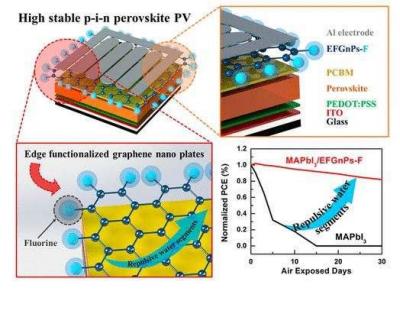A recent study, affiliated with UNIST and the Korea Institute of Energy Research (KIER),has shown a highly stable perovskite solar cells (PSCs), using edged-selectively fluorine (F) functionalized graphene nano-platelets (EFGnPs). This breakthrough is interesting since it is made out of fluorine, a low-cost alternative to gold.

To tackle the issue of perovskite materials' sensitivity to moisture and make progress toward the commercialization of PSCs, the team introduced a highly stable p-i-n structure for PSCs using fluorine functionalized EFGnPs to fully cover the perovskite active layer and protect against the ingress of water for high-stability PSCs.
The newly-developed perovskite solar cell device was fabricated using solution processes, a process that involves the coating perovskite materials on a flexible film. Using this process allows the future application of solar cells to wearable devices. This process is also less costly.


Comments
Integrated batteries?
So- can graphene layers be deposited on the backs of Perovskite panels?